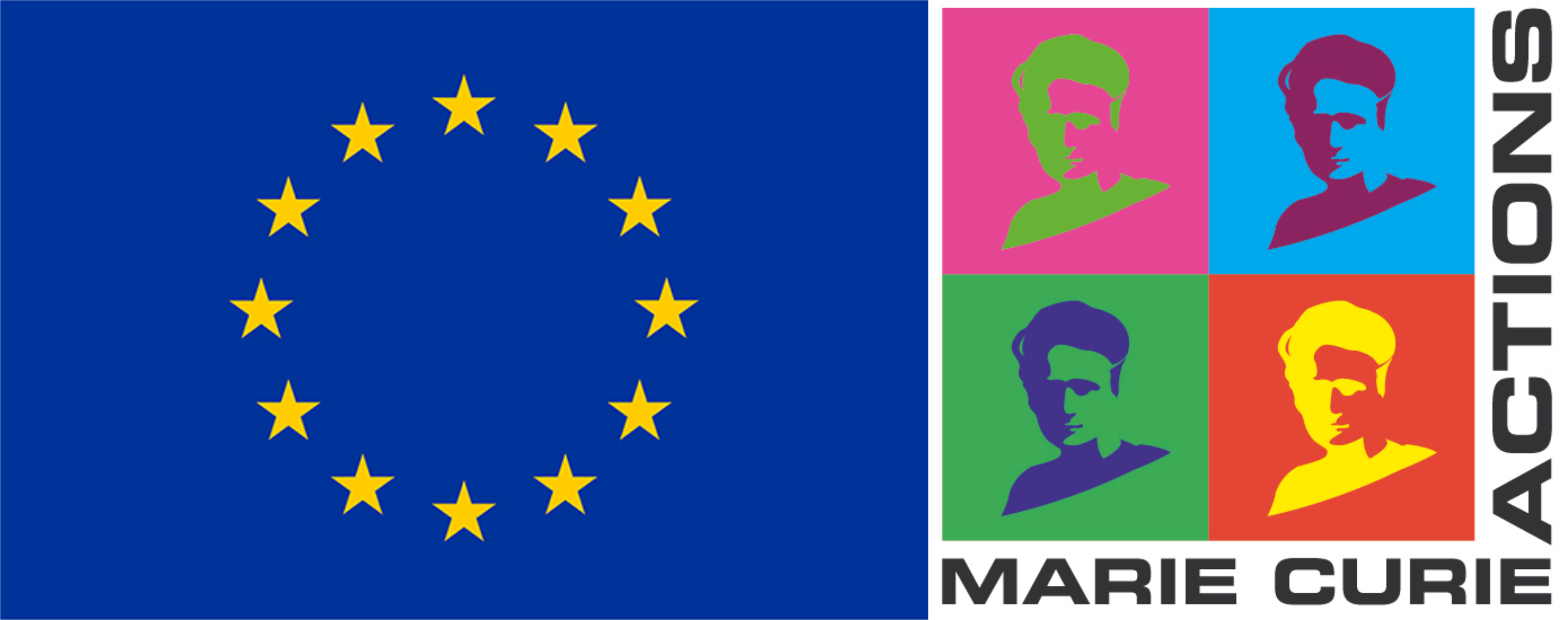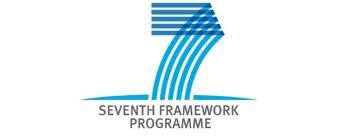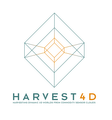Publications
34 Projects found:
1. March 2020 - 29. February 2028
Advanced Computational Design
no funding
|
1. June 2024 - 31. May 2027
Erfassungs- und Modellierungstool zur akustischen, visuellen und räumlichen Gestaltung hybrider Meetingräume
The goal of this project is to research automated design for meeting and conference rooms. The main items are desks, chairs, audio and video equipment. Based on a 3D model of a room provided at input, at TU Wien we investigate concepts for:
The choices are interconnected, influencing each other. Our plan is to filter the available space for placement options and propose a metric representing the setup regarding the visibility of meeting participants and expected picture quality. The best design will be presented at the output. We will approach this problem as a multi-variate optimization in discrete space. Collisions and visibility will rule out many combinations. Further ergonomic constraints will narrow down the space of feasible solutions. The candidate setups will be judged by the metric to select the most suitable for the given shape and parameters of the input room.
no funding
Contact: Michael Wimmer 
|
1. February 2023 - 31. January 2027
Toward Optimal Path Guiding for Photorealistic Rendering
no funding
|
1. April 2021 - 31. March 2025
ECOlogical building enveLOPES: a game-changing design approach for regenerative urban ecosystems
no funding
|
1. July 2022 - 30. June 2024
Ecosystem Modeling Using Rendering Methods
no funding
Contact: Michael Wimmer 
|
1. December 2020 - 30. November 2022
Efficient workflow transforming large 3D point clouds to Building Information Models with user-assisted automatization
no funding
Contact: Michael Wimmer 
|
1. October 2020 - 30. September 2022
Digital Urban Mining Platform: Assessing the material composition of building stocks through coupling of BIM to GIS
no funding
Contact: Michael Wimmer 
|
1. October 2018 - 30. September 2022
Advanced Visual and Geometric Computing for 3D Capture, Display, and Fabrication
This Marie-Curie project creates a leading European-wide doctoral college for research in Advanced Visual and Geometric Computing for 3D Capture, Display, and Fabrication.  Horizon 2020 Marie Sklodowska-Curie Actions (MSCA)
ITN 813170 Horizon 2020 Marie Sklodowska-Curie Actions (MSCA)
ITN 813170
Contact: Michael Wimmer 
|
1. February 2018 - 31. December 2021
Smart Communities and Technologies: 3D Spatialization
The Research Cluster "Smart Communities and Technologies" (Smart CT) at TU Wien will provide the scientific underpinnings for next-generation complex smart city and communities infrastructures. Cities are ever-evolving, complex cyber physical systems of systems covering a magnitude of different areas. The initial concept of smart cities and communities started with cities utilizing communication technologies to deliver services to their citizens and evolved to using information technology to be smarter and more efficient about the utilization of their resources. In recent years however, information technology has changed significantly, and with it the resources and areas addressable by a smart city have broadened considerably. They now cover areas like smart buildings, smart products and production, smart traffic systems and roads, autonomous driving, smart grids for managing energy hubs and electric car utilization or urban environmental systems research. 3D spatialization creates the link between the internet of cities infrastructure and the actual 3D world in which a city is embedded in order to perform advanced computation and visualization tasks. Sensors, actuators and users are embedded in a complex 3D environment that is constantly changing. Acquiring, modeling and visualizing this dynamic 3D environment are the challenges we need to face using methods from Visual Computing and Computer Graphics. 3D Spatialization aims to make a city aware of its 3D environment, allowing it to perform spatial reasoning to solve problems like visibility, accessibility, lighting, and energy efficiency.
no funding
|
1. January 2021 - 30. September 2021
Green and Smart Buildings: Solar Irradiation Analysis for Early Design Phases
no funding
Contact: Michael Wimmer 
|
1. September 2019 - 31. August 2021
Wohnen 4.0 - Digital Platform for Affordable Housing
This is a joint project with the civil engineering faculty and several companies. Its aim is the development of an Integrated Framework “Housing 4.0”; a digital platform supporting integrated planning and project delivery through coupling various digital tools and databases, like Building Information Modeling (BIM) for Design to Production and Parametric Habitat Designer. Our goal is to exploit the potential of BIM for modular, off-site housing assembly in order to improve planning and construction processes, reduce cost and construction time and allow for mass customization will be explored. The novel approach in this project is user-involvement; which has been neglected in recent national and international projects on off-site, modular construction supported by digital technologies. A parametric design tool should allow different stakeholders to explore both high-level and low-level options and their impact on the construction project so that mutually optimal solutions can be found easier.  FFG FFG
Contact: Michael Wimmer 
|
1. December 2015 - 30. November 2020
Real-Time Shape Acquisition with Sensor-Specific Precision
Acquiring shapes of physical objects in real time and with guaranteed precision to the noise model of the sensor devices.  FWF
P24600-N23 FWF
P24600-N23
Contact: Michael Wimmer 
|
1. November 2015 - 31. October 2020
Path-Space Manifolds for Noise-Free Light Transport
The project aims to develop new statistical and algorithmic methods to improve light-transport simulation for offline rendering.  FWF
P27974 FWF
P27974
Contact: Michael Wimmer 
|
1. September 2018 - 31. August 2020
Scanning and data capturing for Integrated Resources and Energy Assessment using Building Information Modelling
The aim of the project is to increase the resources- and energy efficiency through coupling of various digital technologies and methods for data capturing (geometry and materials composition) and modelling (as-built BIM), as well as through gamification. Collaborative project with several companies and institutes.  FFG
867314 - Stadt der Zukunft FFG
867314 - Stadt der Zukunft
Contact: Michael Wimmer 
|
1. May 2017 - 30. April 2020
A Test Suite for Photorealistic Rendering and Filtering
This project will research methods to test and compare global-illumination algorithms as well as filtering algorithms, and also develop test data sets for this purpose.  FWF
ORD 61 FWF
ORD 61
Contact: Michael Wimmer 
|
1. December 2017 - 31. March 2018
KMU Qualifizierungsseminar Rekonstruktion und Virtual Reality
no funding
Contact: Michael Wimmer 
|
1. October 2012 - 30. September 2017
Data-Driven Procedural Modeling of Interiors
The project develops new procedural modeling methods for interior scenes.  FWF
P24600-N23 FWF
P24600-N23
Contact: Michael Wimmer 
|
1. April 2015 - 31. March 2017
INTRA-SPACE: the reformulation of architectural space as a dialogical aesthetic
 FWF FWF
Contact: Michael Wimmer 
|
1. June 2013 - 31. July 2016
Harvest4D - Harvesting Dynamic 3D Worlds from Commodity Sensor Clouds
Harvest4D investigates the whole acquisition, modeling and rendering pipeline for incidental data capture.  EU 7th Framework Program
323567 EU 7th Framework Program
323567
Contact: Michael Wimmer 
|
1. October 2012 - 31. May 2016
Modern Functional Analysis in Computer Graphics
The projects develops new mathematical foundations for global-illumination algorithms.  FWF
P23700-N23 FWF
P23700-N23
Contact: Michael Wimmer 
|
1. January 2011 - 31. December 2015
Photo-Guide: Image-Based City Exploration
The core idea of the project is the enhancement of current state-of-the art navigation systems by visual information obtained from geo-referenced photographs. The aim is to establish a suite of tools together with algorithmic foundations that will be essential for any large scale image-based guidance project.  FWF
P23237-N23 FWF
P23237-N23
Contact: Michael Wimmer 
|
1. January 2013 - 31. December 2015
Semantic Modeling and Acquisition for Urban Safety Simulations
This project aims at analysing the traffic flow of open roads in real time by a sensor fusion of radar data with video feeds. Radar gives an accurate position and velocity of vehicles making computer vision methods more robust in computing their spatial extent and classification from video streams. In this way the huge amount of raw data is reduced to semantically relevant information, which is highly memory efficient, anonymous and sufficient to reconstruct traffic flow over long time periods. Another important goal is a sophisticated 3D visualization of the reconstructed traffic flow providing interactive tools for visual analysis. Information obtained in this way will significantly contribute in adopting measures to increase traffic safety.  FFG
835948 - FIT-IT FFG
835948 - FIT-IT
Contact: Michael Wimmer 
|
1. July 2008 - 31. December 2012
Detailed Surfaces for Interactive Rendering
In this project we study new representation and rendering methods for surface detail in real time.  FWF
P20768-N13 FWF
P20768-N13
Contact: Michael Wimmer 
|
1. January 2010 - 31. December 2012
TERAPOINTS - High Quality Visualization and Interaction with Gigantic Point Data Sets
Laser scanning is an important tool in cultural heritage for documenting the state of archaeological monuments. The data produced by laser scanning is ever increasing, with the latest generation of laser scanners generating a billion of points in one measurement pass. To colorize the laser scans, additional photographs are taken. Managing these huge amounts of data in terms of size is a challenge on its own, but also to ensure the quality of the resulting point-based models is of utmost importance for the further development of laser scanning as a standard technique in cultural heritage. We identified three topics that can drive forward the integration of laser scanning in the everyday work of archaeologists.  FFG
825842 - FIT-IT Visual Computing FFG
825842 - FIT-IT Visual Computing
Contact: Michael Wimmer 
|
1. September 2007 - 31. August 2012
GAMEWORLD - Procedural Worlds for Games
The aim of the GAMEWORLD project is to procedurally generate cities, villages and other game environments mainly to be used in tomorrow's video games.  FFG
813387 - FIT-IT Visual Computing FFG
813387 - FIT-IT Visual Computing
Contact: Michael Wimmer 
|
1. February 2011 - 31. July 2012
Landspotting - Creating Games for Improving Land Cover
Social gaming to collect vast amounts of data for satellite validation  FFG
2008999 FFG
2008999
Contact: Michael Wimmer 
|
1. May 2008 - 30. April 2011
General Purpose Visibility
Visibility culling is a fundamental problem of computer graphics, and is of crucial importance for many applications, like game development or architectural design. For example, interactively rendering a model containing hundreds of millions of polygons like the Boeing 777 model shown on the cover page is only possible when invisible parts of the model are "culled" away. Solving the visibility problem has been an important research topic for many years, and countless methods have been proposed. Amazingly, most approaches still have more or less serious issues that prevent their widespread use. Preprocessed visibility solutions attempt to solve the problem in an offline step, but are often slow, lack robustness, and are hard to implement. Online culling algorithms have a lot of potential since they can be used on arbitrary scenes, but they induce an overhead during rendering which is unacceptable for applications that strive for optimal performance. We believe that basic research problems remain unsolved until this day for preprocessed visibility as well as for online culling, and the goal of this project is to tackle and solve the majority of these problems. In order to do this, we have to gain more insight into the complex properties of visibility, which are still not entirely understood. Our proposed methods have applications in various fields, like game development, architectural design, urban visualization, or massive model visualization.  FWF
P21130-N13 FWF
P21130-N13
Contact: Michael Wimmer 
|
1. October 2006 - 31. December 2009
SCANOPY - Scan Data Organisation, Processing and Display
The aim of the Scanopy project is to provide efficient algorithms for working with 3D laser scan data. The first main challenge is to improve the quality of raw scan data via filtering, scan completion and repair, making use of image information and symmetries. The second challenge is to and second to develop efficient data structures and algorithm to allow displaying huge point-based models. The third challenge is to improve the appearance of the models via lighting and relighting.  FFG
812126 FFG
812126
Contact: Michael Wimmer 
|
1. December 2005 - 31. December 2008
Cross-Modal
The CROSSMOD (Cross-Modal Perceptual Interaction and Rendering) project studies the effects that the visual and audio channels have on each other and exploits these releations to improve rendering speed  EU IST - 6th Framework Program EU IST - 6th Framework Program
Contact: Michael Wimmer 
|
1. November 2004 - 30. November 2007
TreeLumination
The aim of the project Treelumination is to enhance the realism and visual quality of applications that need to display trees and tree-like plants in a real-time setting.  FWF
P17261-N04 FWF
P17261-N04
Contact: Michael Wimmer 
|
1. October 2004 - 30. June 2007
GameTools
The GameTools Project (GTP) researches and implements next generation realtime 3D Libraries for Geometry/Plants, Visibility and Global Illumination under C++/DirectX9. Platforms: OGRE for PC and Shark3D middleware for PC & consoles.  EU IST - 6th Framework Program EU IST - 6th Framework Program
Contact: Michael Wimmer 
|
1. November 1999 - 31. October 2003
UrbanViz
This project aims at the creation and real-time display of large and medium-scale urban environments.  FWF FWF
Contact: Michael Wimmer 
|


















